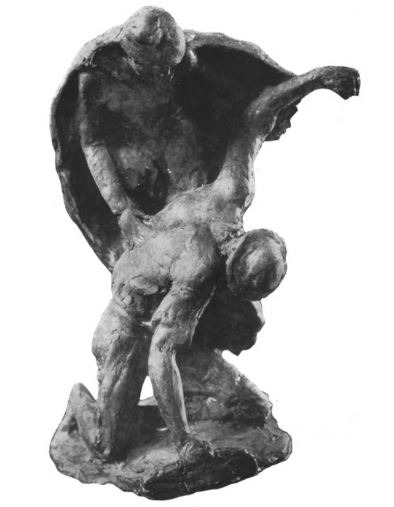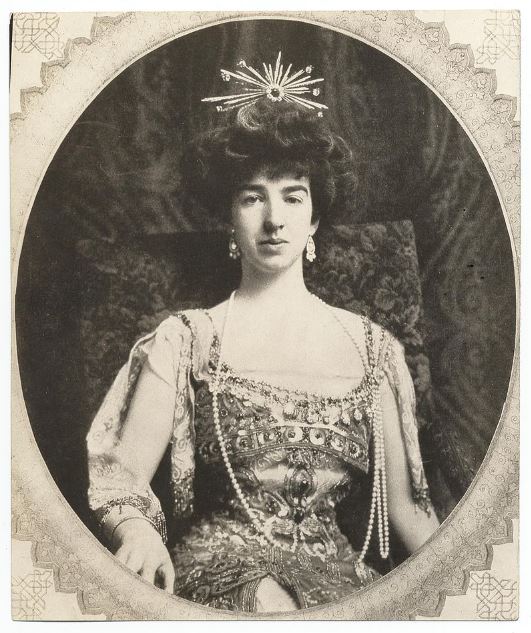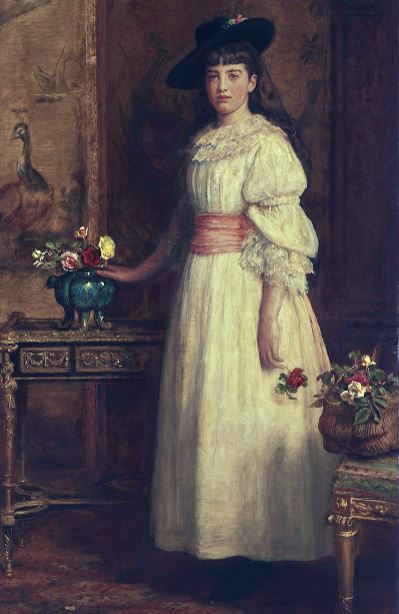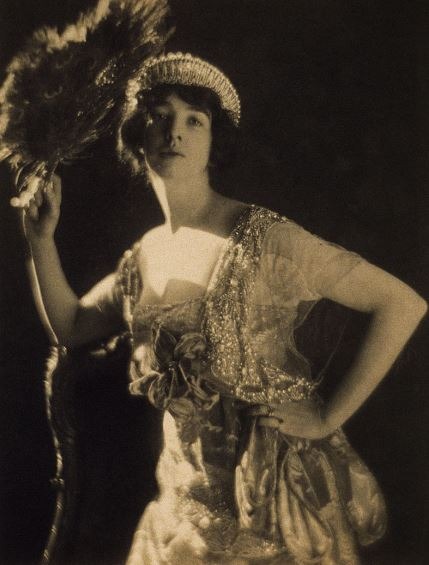Gertrude Vanderbilt Whitney was a well-known sculptor, art patron, and collector. She was the founder of the Whitney Museum of American Art, which opened its doors in 1931 and is located in New York City.
Gertrude Vanderbilt Whitney was a prominent social figure in American society and was also a famous hostess. Her family was quite wealthy, and she enjoyed a life of luxury. Born as a Vanderbilt, she later married into the Whitney family. However, there have been talks about her gender identity.
Other than being an academic sculptress, Gertrude Vanderbilt Whitney is one of the most important art patrons in American avant-garde, during the time period between the two world wars. She has produced many sculptures in her lifetime, including commemorative sculptures. Her works have been critically acclaimed both in America and in Europe.
Early Years
Gertrude Vanderbilt Whitney was born on January 9, 1875, in New York City. She was the second daughter of Cornelius Vanderbilt II and Alice Claypoole Gwynne. Her great grandmother was Cornelius Vanderbilt, who was a railroad tycoon.
Before she was born, her older sister had died. However, she had several brothers and a younger sister with whom she grew up. Her family, the Vanderbilts were extremely wealthy and lived in a luxurious mansion that was situated at 742-748 Fifth Avenue. This area was also known as 1 West 57th Street.
When Gertrude Vanderbilt Whitney was young, she spent the summer months in Newport, Rhode Island, as her family had a summer home there. This home was called The Breakers and is there where she played with her brothers and partook in rigorous sports.
She received her education through private tutors, and she also attended the Brearley School for women’s studies, located in New York City. During her schooling, she made small drawings and made watercolor paintings in her personal journals. It is through these journals that she realized that she was interested in arts.
Gertrude visited Europe in the early 1900s, and it is there that she discovered the art world of Montmartre and Montparnasse, which was flourishing in France. The sights she saw impressed her and encouraged her to pursue art and let her creativity loose. Thus she became a sculptor.
She studied at the Art Students League of New York alongside Hendrik Christian Anderson and James Earle Fraser. There were other women in her class, including Anna Vaughn Hyatt and Malvina Hoffman. She then moved to Paris, where she studied with Andrew O’ Conner. She also received a lot of critique on her work from Auguste Rodin.
Gertrude Vanderbilt Whitney mainly trained with sculptors that worked on public monuments. Therefore, she was influenced by her mentors to take that direction. However, her works also include several small sculptures, but her monumental ones are those which brought her fame.
For her first public commission, she made a life-size nude male. This plaster sculpture was called Aspiration and placed at the Pan-American Exposition in Buffalo, New York, outside the New York State Building in 1901.
At first, Gertrude Vanderbilt Whitney did not use her real name, and used a pseudonym because she feared that someone would recognize her and she would be seen as a socialite and not taken seriously. No one in her family was supportive of her desire to work as an artist and never took her work seriously.
She also believed that a woman would never be taken seriously as an artist and that her wealthy status put her at an even more disadvantage as other artists were needier of the money.
Later, in 1907, she bought an apartment and studio in Greenwich Village. Gertrude also set up a studio in Passy, which was a Parisian neighborhood known to be fashionable. By 1910, Gertrude Vanderbilt Whitney was exhibiting her sculptures publicly and was using her own name to do so.
One of her famous works includes Paganisme Immortel, which is a statue depicting a young girl sitting on a rock. Her arms are outstretched, and next to her is a male figure. This statue was displayed at the National Academy of Design in 1910. She also made Spanish Peasant, which was accepted in the Paris Salon in 1911.
The effect of World War I and the aftermath

At this hospital, Gertrude Vanderbilt Whitney spent her time making drawings of the soldiers who came in. These drawings went on to become plans for her memorials in New York City. Before the war, her work did not have a very realistic style. However, she strayed from her original art style to depict seriousness in her work.
Gertrude Vanderbilt Whitney created a series of smaller pieces that showed off soldiers in war. However, since her smaller works were not appreciated and seen to be significant during her lifetime, they did not attract much attention. She showed off these sculptures at a show held at her Eighth Street Studio in November 1919. They were also presented at a show at the Art Institute of Chicago and in New York City.
After the war, Gertrude also created several commemorative sculptures. In 1920, her work received critical acclaim in the United States and Europe. It was her monumental works, which were the most popular.
In the 1930s, however, the popularity of her monumental works started to see a decline. One of her last pieces was the Spirit of Flight. She created this sculpture for the New York Work’s Fair of 1939.
One of her most important achievements, according to critics, is the Titanic Memorial. This statue was made using a $50000 prize that she received from a competition she won in 1914. It is one of the famous scultptures found in New York.
Influence
Gertrude Vanderbilt Whitney came from a very wealthy family, which enabled her to become a patron of arts and commission various artists to create art for her.
She also used her wealth to support female artists, and help them advance their careers in art. Gertrude Vanderbilt Whitney supported and exhibited works made by women in women-only shows. Furthermore, she also made sure that works by women were always included in mixed-gender shows.
Furthermore, Gertrude also supported local art exhibitions and those around the country. One of those shows includes the Armory Show, which took place in New York in 1913. She was also in the habit of donating money to the Society of Independent Artists. This foundation was founded in 1917 and helped promote artists who strayed from the academic norms of the time.
She also bought multiple pieces from new artists to help support them in their art careers. Gertrude Vanderbilt Whitney also donated money to The Arts magazine, without which, it would have had to close. She also financed the Internation Composer’s Guild, an organization aimed at promoting modern music performances.
In 1908, Gertrude Vanderbilt Whitney opened up the Whitney Studio Gallery, which was situated on West Eight Street in Greenwich village. Her own studio was in the same building. In her newly opened studio gallery, Gertrude invited various artists to show off their works, including Robert Henri and Jo Davidson.
Gertrude Vanderbilt Whitney also established the Whitney Studio Club in 1914 at 147 West 4th Street. This club was a place where young artists could get together and talk. They could also exhibit their work. Gertrude also funded their housing nearby, and also gave them stipends for living costs.
The Whitney Studio expanded, and the headquarters were once again moved back to West Eith Street from West Fourth Street in 1923. The expansion of the club was both in size and scope. These first few galleries would later on become Gertrude Vanderbilt Whitney’s greatest legacy.
Whitney offered the New York Metropolitan Museum of Art, one of the top musums to visit in New York, her twenty-five-year collection in 1929. This collection consisted of approximately 700 American modern artworks.
Alongside these works, she also offered payment to help build a wing in the museum that would accommodate these works. However, her offer was declined as the museum refused to take American Art.
Due to this rejection, Whitney decided that she would create her museum by using her own studios and simply expanding and renovating them. When it came to appointing a director for her museum, Gertrude Vanderbilt Whitney chose Juliana Force. She was her former assistant since 1914.
The museum aimed to embrace modernism. It also tried to shift away from the idea that American art was rural and narrow in scope. Furthermore, Whitney’s Greenwich village studio is now considered a National Treasure thanks to the National Trust for Historic Preservation, which has given it this title and also a landmark status.
Whitney died in 1942 at the age of 67 and was buried beside her husband in Woodlawn Cemetery.
Conclusion
Gertrude Vanderbilt Whitney, although a daughter of a rich family, had her fair share of hardships regarding what she wanted to do in her life. No one supported her career as an artist, yet she managed to make a name for herself.
Furthermore, she also tried to support other female artists and acted as a mentor she wished she had. Whitney was an incredible sculptress and her works, especially her larger monumental works, are famous in Europe and America.



